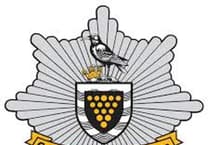Evidence of 10,000 years of Cornish history has been unearthed by Cornwall Council’s Cornwall Archaeological Unit (CAU) during the work to upgrade the A30 between Chiverton and Carland Cross.
Among the finds were tool preparation areas from the Mesolithic period, a Bronze Age burial mound, and evidence of Roman road construction.
The unit is now approaching the final piece of fieldwork of the archaeological mitigation programme associated with the construction of National Highways’ A30 Chiverton to Carland Cross road upgrade — and are now able to share the initial results from the project, which started in the lockdown summer of 2020, three-and-a-half years ago.
Working with principal contractors Costain, archaeological investigations have been completed in 16 separate areas — each a large project in its own right — and these have included four full excavation areas, 22 strip map sample excavations, 19 watching briefs, two flint scatter recording areas, two paleo-environmental sampling areas and two historic building records.
The nature of the scheme has created an opportunity to look at a completely random (in archaeological terms) cross-section across nearly 10 miles of Cornish landscape and the investigations have revealed a large number of significant sites that would otherwise remain unknown.
The remains encountered span 10,000 years of Cornish history, from the first Mesolithic hunter-gathers re-populating the landscape following the end of the last ice age to relics of the 20th century’s Cold War.
Perhaps the most significant finds were the earliest. At Ventonteague, just west of Carland Cross, the team found a huge scatter of flint tools and waste. By collecting the flint using innovative sampling methods CAU were able to recover around 100,000 pieces of flint from this one area, and in the process also recovered a sizeable collection of worked slate tools, slate beads, daub, and hazelnut shells.
Much of this would have gone unnoticed without the sampling technique used. Even more excitingly, the scatter was associated with a number of hollows and posthole features that are thought to represent structures used by the Mesolithic hunter-gatherers that were knapping the flint 10,000 to 6,000 years ago. The subsequent Neolithic period saw the introduction of pottery and agriculture. The team found isolated pits containing pottery throughout the scheme but more significantly identified a circular structure built of stakes enclosing an area containing a pit full of flint nodules.
The Early Bronze Age saw the introduction of metalwork and the construction of round barrows. The team excavated one barrow close to Carland Cross at Higher Ennis, where cremated remains were found in an unusual urn that appeared to have elements of a style more usual further east in Britain – perhaps a visitor to Cornwall.
One of the Ventonteague barrows also contained a whole urn, this time without human remains. Also found were whole Bronze Age urns from a number of pits, three at Nancarrow, Marazanvose and one from a roundhouse at Trevalso.
The Bronze Age saw the introduction of more substantial roundhouses, stone-walled and set in hollows. The team excavated one of these at Trevalso, along with a more ephemeral post-ring structure nearby. Both contained substantial quantities of Trevisker ware, the pottery prevalent in Cornwall at that time, as well as a bronze socketed hammer from one building and a stone mould for a bronze object, possibly a razor, from the other. Another roundhouse at Marazanvose was a much larger structure and contained evidence for a range of industrial processes, including possible metalworking.
Work will now be undertaken to see if the team can learn anything from the sparse materials that they left behind.
A spokesperson said: “One type of feature cropped up throughout the scheme, in a variety of forms. Given the nature of the scheme it seems appropriate that it gave us the chance to discover former sections of road, long abandoned or bypassed. At Carland Cross to the east and Chybucca and Four Burrows to the west we found long lines of pits, which the team are interpreting as borrow pits, used to excavate stone for road surfacing. It takes a great deal of social organisation to co-ordinate road building on this scale and elsewhere these pits have been taken to imply Roman road building.”
At Marazanvose, the team found old sections of road with ditches either side to carry water away from the carriageway. Here it could be seen that the old section of road lined up with part of the present A30, which had presumably been diverted to the north of Marazanvose at some point. Historians know this happened a long time ago as the parish boundary (usually laid out in the early medieval period, pre-1066) follows the diverted A30 and field boundaries either side of it are not cut by the diverted road — therefore the original road is likely to be Roman, or even earlier.
Significant remains were found dating to the Second World War. Right next to the Chybucca junction the team uncovered the remains of 50 or so huts and a blacksmith’s forge forming the remains of a United States Army base in use from 1943 up until D-Day in June 1944.
The spokesperson said; “It had been thought that the site might have been the base for a group of the 29th Infantry Division that landed on Omaha Beach on D-Day but subsequent investigations, including contact with the Divisional Facebook page administrator in the States, suggest that this base was a regional supply depot attached to many Divisions, providing a vehicle park and repairs, an ammunition dump, and an ordnance depot. The team found many artefacts, including personal effects like a tube of toothpaste, broken radios, enamel mugs, and a large number of beer bottles!”
At Higher Ennis the remains of foxholes were discovered that formed part of a Home Guard defensive positioned to cover Newlyn Downs in the event of a German invasion from the north coast at Perranporth or Holywell. This same area was subsequently used as an aircraft observation post and then, in the 1950s, as the location for a Royal Observer Corps observation post. Sadly, the bunker had been ‘decommissioned’ in the 1990s and what remained was flooded and rat-infested.
The project has not only identified and recorded a large amount of significant archaeology, but has also enabled CAU to employ 52 people over the course of the three years, the majority local, and the post-excavation programme continues and is employing nine people full-time.
The project also provided the opportunity for CAU to provide training and employment for young people through the UK Government’s Kick Start Scheme, creating jobs for 16 to 24-year-olds on Universal Credit. This has been hugely successful with three young people now continuing to work with CAU as freelance archaeologists.
Cllr Martyn Alvey, Cornwall Council’s Cabinet member with responsibility for the archaeology service, said: “A major project such as the A30 improvements offers a wonderful opportunity to investigate a large area and uncover a huge period of Cornish history.
“As ever, the team has worked brilliantly to discover, identify and interpret a wealth of material which gives us a real insight into the way people lived across so many periods.”




